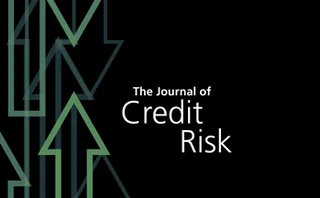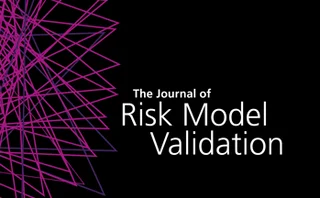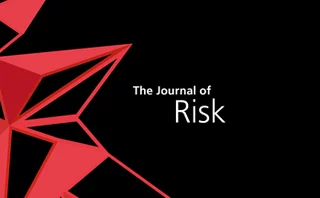Original research
Visibility graph combined with information theory: an estimator of stock market efficiency
In this paper, the authors use information theory quantifiers to analyze the graphs generated by the VG method as applied to the return rate time series of stock markets from different countries.
Adapting the Basel II advanced internal-ratings-based models for International Financial Reporting Standard 9
This paper examines how we may use A-IRB models in the estimation of expected credit losses for IFRS 9 purposes.
Primary-firm-driven portfolio loss
This paper describes a simple model that can be used for risk management.
Portfolio credit risk model with extremal dependence of defaults and random recovery
This paper proposes a portfolio credit risk model with random recovery rates.
Statistical testing of DeMark technical indicators on commodity futures
This paper examines the performance of three DeMark indicators over twenty-one commodity futures markets and ten years of daily data.
Correctness of backtest engines
In this paper, the authors provide tools to test the correctness of backtest engines for setups with at most one entry and one exit.
Black–Litterman, exotic beta and varying efficient portfolios: an integrated approach
This paper brings Black–Litterman optimization, exotic betas and varying starting portfolios together into one complete, symbiotic framework.
Agnostic risk parity: taming known and unknown unknowns
This paper offers a new perspective on portfolio allocation, which avoids any explicit optimization and instead takes the point of view of symmetry.
Optimal management of green certificates in the Swedish–Norwegian market
This paper proposes and investigates a valuation model for the income of selling tradeable green certificates in the Swedish–Norwegian market, formulated as a singular stochastic control problem.
A note on the statistical robustness of risk measures
This paper focuses on the parametric estimators of risk measures and uses Hampel’s infinitesimal approach to derive the robustness properties.
Modeling superior predictors for crude oil prices
This paper provides an analysis of a broad spectrum of fundamental and nonfundamental indicators for crude oil prices.
On a family of weighted Cramér–von Mises goodness-of-fit tests in operational risk modeling
This paper applies classical theory to determine if limiting distributions exist for WCvM test statistics under a simple null hypothesis.
Barriers for district heating as a source of flexibility for the electricity system
In this paper, the authors investigate the barriers to including DH as a flexible resource for the electricity market in Denmark, Norway and Sweden.
Various approximations of the total aggregate loss quantile function with application to operational risk
This paper investigates the mechanics of the empirical aggregate loss bootstrap distribution.
Simple models in finance: a mathematical analysis of the probabilistic recognition heuristic
In this paper, the authors present a general model of the recognition heuristic that assumes that objects’ recognition is random.
A gradient-boosting decision-tree approach for firm failure prediction: an empirical model evaluation of Chinese listed companies
In this paper, the authors employ a gradient-boosting decision-tree method to improve firm failure prediction and explain how to better analyze the relative importance of each financial variable.
Optimal execution of accelerated share repurchase contracts with fixed notional
This paper studies the pricing and optimal execution strategy of an accelerated share repurchase contract with a fixed notional.
On empirical likelihood option pricing
This paper investigates the application of the empirical likelihood method in the study of option pricing.
Optimal oil production under mean-reverting Lévy models with regime switching
This paper models the evolution of the oil price as a mean-reverting regime-switching jump–diffusion process.
Modeling impacts of stock jumps on real estate investment trust returns with application to value-at-risk
This paper aims to model the impact of extreme stock jumps on REIT returns.
Pricing and hedging options with rollover parameters
This paper consists of a “horse race” study comparing (i) a number of option pricing models, and (ii) roll-over estimation procedures.
Forecasting scenarios from the perspective of a reverse stress test using second-order cone programming
This paper proposes a model for forecasting scenarios from the perspective of a reverse stress test using interest rate, equity and foreign exchange data.
Does higher-frequency data always help to predict longer-horizon volatility?
This paper shows that realized conditional autocorrelation in return residuals is a strong predictor of the relative performance of different frequency models of volatility.
Goodness-of-fit for discrete-choice models of borrower default
This paper demonstrates that the rank-order tests are unreliable for assessing models to be used to predict probabilities.






